Six Common Causes and Remedies for Onsite Wastewater Treatment System Malfunction
Posted on by Dennis Hallahan, P.E.
A well-maintained onsite wastewater treatment system can last decades. However, there are some instances where the onsite wastewater treatment system could malfunction prematurely, which can be due to a variety of factors based on the septic tank specifications, the surrounding environment, and water usage. The following highlights common causes of onsite wastewater treatment system malfunction and common solutions.
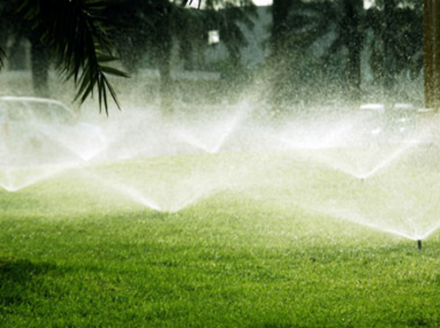 Improper Siting:
Improper Siting:
The onsite wastewater treatment system was installed in an unsuitable area. For example, near a wetland, in an area where vehicular traffic or parking will occur, an area inundated with surface water or where the groundwater is close to the ground surface during certain times of year, or installed under an irrigation system.
Possible Remedies:
- Relocate the drainfield to a higher topographic position.
- Install curtain drains to attain proper separation distance.
- Divert surface water discharge, such as roof drains, basement sump pump discharge, irrigation system, and overland precipitation flow.
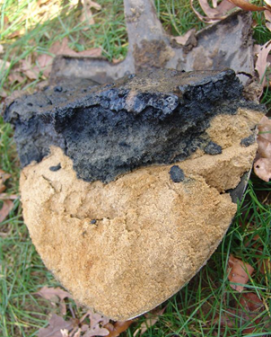 Clogged Infiltrative Surface:
Clogged Infiltrative Surface:
Clogging from solids, grease, oil, or similar substances may irreparably damage the drainfield requiring replacement.
Possible Remedies:
- Check the home for excessive water use or leaks that may have flushed out solids from the septic tank.
- The drainfield may not be repairable and may require replacement or expansion.
- Avoid the discharge of deleterious substances to the septic tank, such as petrochemicals, harsh cleaners, poisons, and grease.
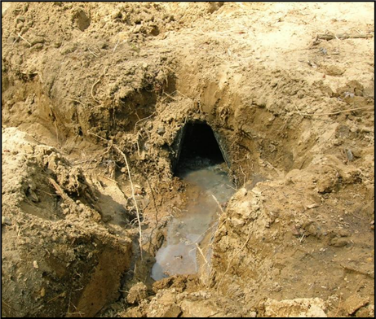 Incorrect Soil Characterization:
Incorrect Soil Characterization:
The soil plays an important role in onsite wastewater treatment systems. If the soil is improperly characterized during the initial design, the system installed could be undersized.
Possible Remedies:
- Hire a soils professional to conduct a soil characterization.
- Expand the system.
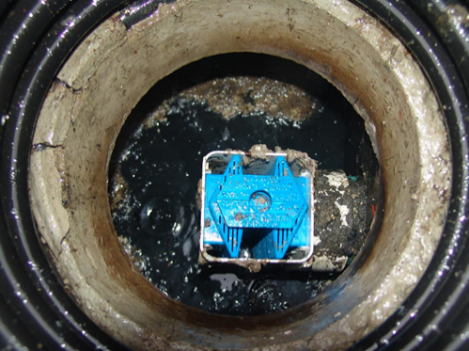 Malfunctioning Septic Tank:
Malfunctioning Septic Tank:
Excessive sludge in the tank can have a detrimental impact on operation, including reduced volume and hydraulic residence time. If sludge accumulation obstructs the outlet tee the liquid level in the tank will rise to the top of the outlet tee allowing the discharge of scum to the drainfield, which can clog the soil pore matrix.
Possible Remedies:
- Pump the septic tank on a regular basis, repair sources of leaking groundwater, and keep the effluent filter clean to allow for discharge to the drainfield.
- Verify that the piping and distribution box systems are functioning properly and allowing the flow of wastewater into the tank and effluent to the drainfield.
Hydraulic Overload:
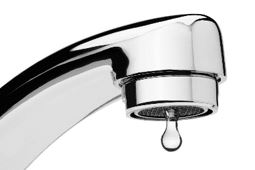 Hydraulic overload can occur due to periods of excessive water use. For example, multiple loads of laundry in a single day, several showers over a short period of time, leaky fixtures, or any form of continuous water discharge into the system.
Hydraulic overload can occur due to periods of excessive water use. For example, multiple loads of laundry in a single day, several showers over a short period of time, leaky fixtures, or any form of continuous water discharge into the system.
Possible Remedies:
- Repair leaky plumbing fixtures.
- Coach owners to alter their water use habits in order to spread wastewater discharges over time.
- Separate sump pump and water softener back wash discharges from the onsite wastewater treatment system.
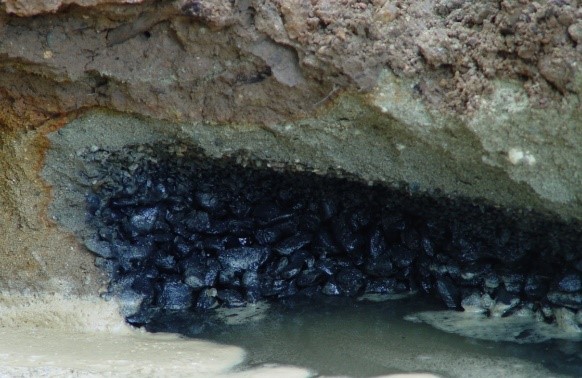 Old System/Excessive Biomat:
Old System/Excessive Biomat:
Under normal operation, a septic system builds up a biological layer (biomat) that restricts the soil’s ability to absorb water. Over time, the biomat may become overly restrictive, ultimately causing a system malfunction.
Possible Remedies:
- Check the home for excessive water usage/leaks that may have caused solids-carryover.
- Remediate the drainfield through the installation of an aerobic bacterial generator, such as the Aquaworx Remediator, to reduce biomat accumulation and allow the hydraulic capacity of the system to be restored.
The best remedy for the site typically begins by conducting a thorough investigation by a licensed contractor. Note that remedies implemented must adhere to any state and local regulatory requirements that apply to the repair of a malfunctioning onsite wastewater treatment system.
About the Author:
 Dennis Hallahan, P.E.
Dennis Hallahan, P.E.
Technical Director
Dennis F. Hallahan, P.E., is the Technical Director of Infiltrator Water Technologies. Dennis has over twenty-eight years of experience with the design and construction of on-site wastewater treatment systems. He has authored several articles for on-site industry magazines and has given numerous presentations nationally on the science and fundamentals of on-site wastewater treatment systems. Dennis also oversees a department that is responsible for product research and testing for both Universities and private consultants. The department develops system sizing charts for national and international approvals and assists customers and field representatives in the planning and review of large decentralized systems. He received his MS in civil engineering from the University of Connecticut and his BS in civil engineering from the University of Vermont. Dennis is a registered professional engineer in Connecticut. He has been with Infiltrator for over 16 years and in his current position as Technical Director, he is responsible for the technology transfer between Infiltrator and the regulatory and design communities. Dennis also holds several patents for on-site wastewater products. Member ASCE, WEF, serves on the NOWRA Technical Practice and Educational Committees, also on the New England Water Environment Federation’s Small Community Committee.
Contact us if you have any questions about this blog post.
